Blogs

Understanding Nickel Base Alloys: An In-Depth Tutorial on Properties and Applications
Introduction
Nickel-based alloys stand at the forefront of advanced materials, celebrated for their unique composition and unparalleled performance in demanding environments. With a primary focus on nickel, these alloys often incorporate elements such as chromium and molybdenum, resulting in exceptional mechanical properties that are critical across various industries.
From the aerospace sector, where they ensure the reliability of turbine engines, to chemical processing facilities that rely on their resistance to corrosive environments, the applications of nickel-based alloys are vast and vital.
As global demand for high-performance materials escalates, understanding the intricacies of these alloys—including their composition, properties, and processing challenges—becomes essential for procurement managers striving to make informed decisions that enhance operational efficiency and safety in their respective fields.
This article delves into the significance of nickel-based alloys, exploring their diverse applications and the innovations shaping their processing and utilization.
Introduction to Nickel-Based Alloys: Definition and Importance
Nickel base alloys are sophisticated materials that are predominantly composed of nickel, often blended with elements such as chromium, iron, and molybdenum. These materials, specifically nickel base alloys, are renowned for their exceptional mechanical properties, including high strength and durability, as well as their remarkable resistance to extreme temperatures and corrosive environments. Such characteristics make nickel base alloys invaluable across multiple sectors, particularly in aerospace, chemical processing, and electronics.
For instance, in the aerospace industry, their ability to withstand harsh conditions is crucial for ensuring the safety and efficiency of aircraft components. Significantly, stainless steel represents over two-thirds of global consumption of this metal, emphasizing the importance of metal-based mixtures in the market. Furthermore, as Manoj Phagare, a Senior Research Analyst at Cognitive Market Research, notes, ‘Nickel base alloys are essential in meeting the demands for high-performance materials in various industries.’
While the context of non-sparking tools does not directly apply to nickel-based materials, it is worth mentioning that these materials can be utilized in environments where non-sparking tools are critical, as their properties may contribute to safety and reliability in explosive potential settings. As the need for these materials keeps growing, particularly with the anticipated 7.9% rise in worldwide use of this metal by 2024—largely fueled by the stainless steel industry and increasing demand for batteries—the significance of these mixtures in essential uses will only become more evident. Their versatility and reliability in demanding environments emphasize their importance in contemporary industrial contexts.
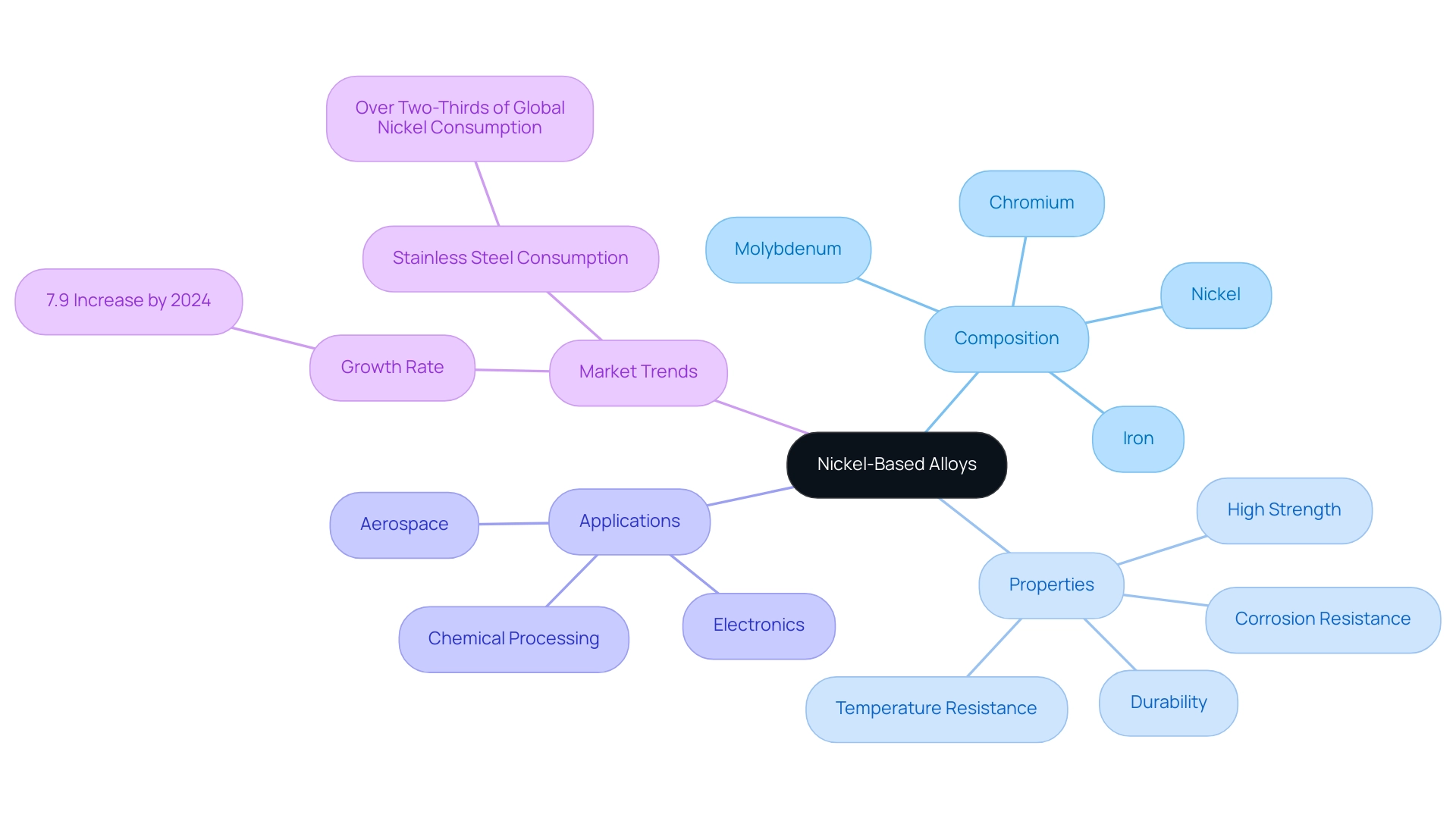
Types of Nickel-Based Alloys: Composition and Characteristics
Q1. What are the typical uses of copper and its mixtures?
Copper and its mixtures are extensively employed in numerous sectors because of their distinctive characteristics.
- In marine engineering, they are essential for components such as:
- Ship hulls
- Offshore platforms
Seawater piping systems
Their outstanding ability to withstand corrosion is a significant advantage over stainless steel.In automotive uses, these metals are utilized for:
- Brake lines
- Hydraulic systems
They offer exceptional durability and performance.
Furthermore, copper nickel compositions are found in:
– Electronics
– Heat exchangers
– Currency
Their versatility and effectiveness in challenging environments make them a preferred option in numerous sectors, especially where durability against corrosion and wear is crucial.
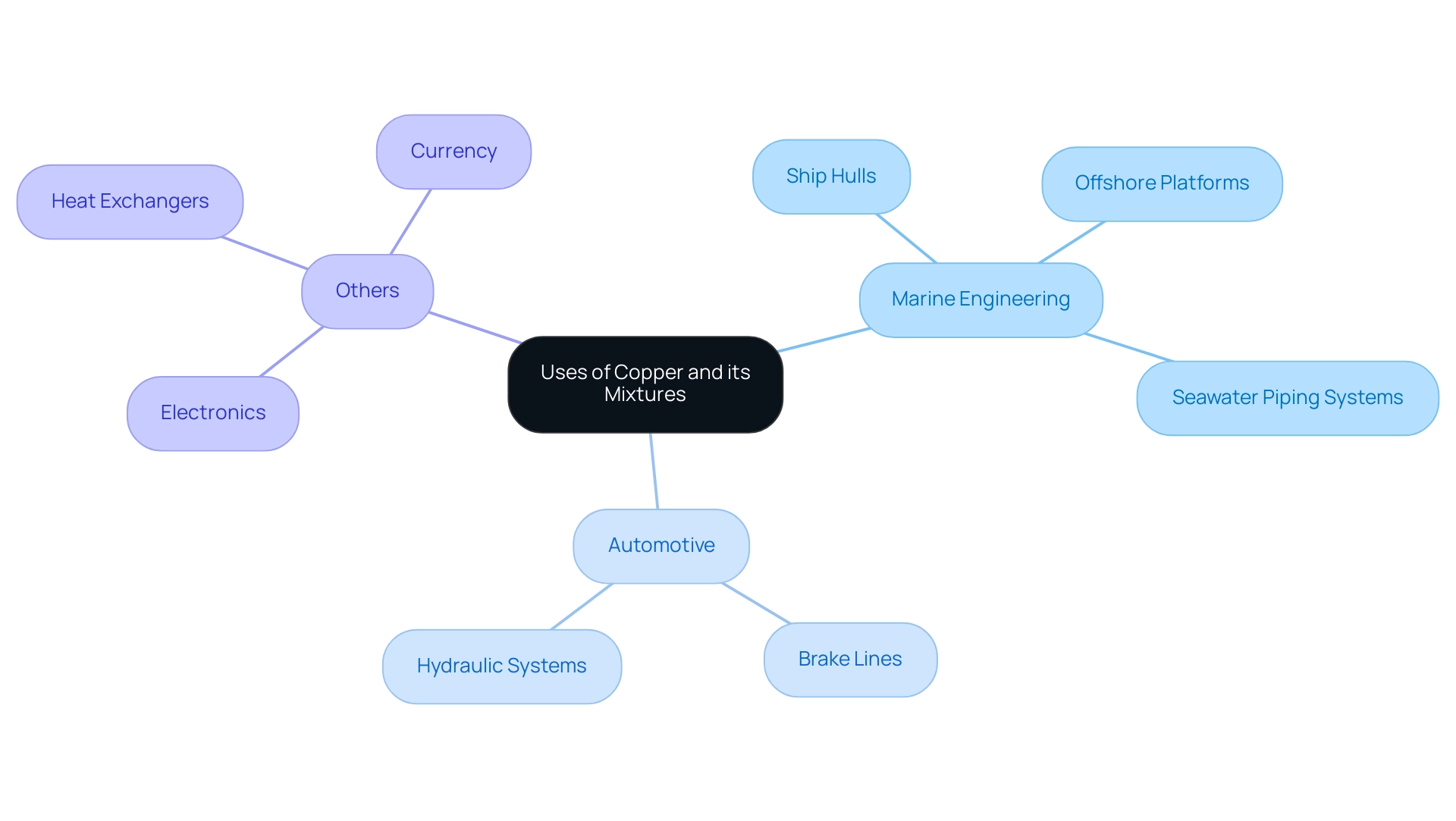
Key Properties of Nickel-Based Alloys: Performance and Durability
Nickel base alloys are characterized by several essential properties that make them invaluable in demanding applications. However, for procurement managers seeking comprehensive solutions for high-temperature resistance and electrical insulation, mica tape products should also be considered.
- Corrosion Resistance: Nickel base alloys display exceptional resilience against corrosive environments, which is vital for industries such as chemical processing.
For instance, nickel-chromium-molybdenum combinations, including variations like C-276, C-22, 59, C-2000, and 686, are renowned for their ability to withstand reducing acids such as hydrochloric and sulfuric acid, ensuring operational reliability and longevity. Recent studies suggest that the inclusion of molybdenum (Mo) in nickel base alloys enhances corrosion protection by consuming carbon, thereby hindering its interaction with chromium. However, excessive molybdenum can lead to carbide accumulation and deterioration of corrosion resistance.
Thermal Stability: Nickel base alloys maintain their mechanical integrity at elevated temperatures, which is a critical factor in aerospace applications where substances are subjected to extreme conditions. Current studies indicate that these materials can endure high temperatures without losing performance, underscoring their suitability for aircraft components.
Stress Rupture Resistance: The capability of nickel base alloys to withstand deformation under stress at elevated temperatures guarantees their sustained performance in challenging environments. This property is particularly crucial in contexts where structural integrity is paramount.
Weldability: The weldability of many nickel base alloys allows them to be effectively welded, facilitating their integration into complex structures and components. The versatility in fabrication enhances their applicability across various industrial sectors.
Alongside mica tape products, explore our selection designed for high-temperature durability and electrical insulation, rendering them perfect for essential uses in electrical engineering. These tapes not only offer flame resistance and dielectric strength essential for manufacturing fire-resistant cables but also possess high mechanical strength, enabling them to insulate large flat surfaces in challenging environments. By comprehending both nickel composites and mica tape products, procurement managers can make educated choices when choosing materials for particular uses, utilizing their distinct characteristics to enhance performance in high-temperature situations.
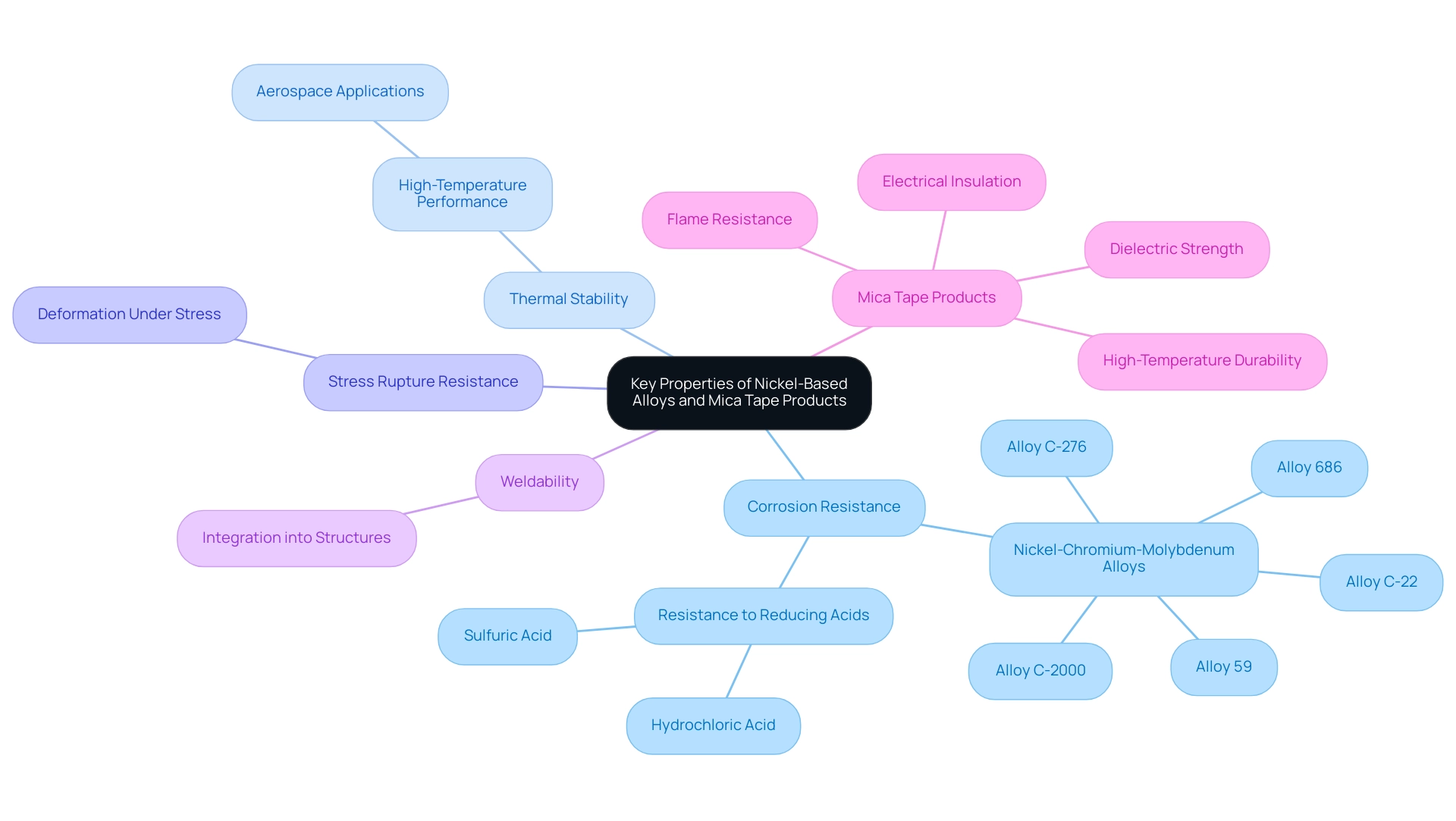
Applications of Nickel-Based Alloys: From Aerospace to Chemical Processing
Nickel base alloys are integral to numerous industries due to their exceptional properties, which enhance performance in demanding environments. Their uses encompass:
- Aerospace: These materials are essential in turbine engines and exhaust systems, where high-temperature strength and oxidation resistance are critical. As mentioned by aerospace engineers, the dependability of these metal mixtures in these components directly affects engine efficiency and safety, rendering them a favored option for contemporary aircraft. Domadia, with its rigorous quality assurance processes and advanced manufacturing techniques, ensures that our metal products meet the highest industry standards, providing peace of mind for aerospace applications.
- Chemical Processing: The versatility of nickel base alloys shines in chemical reactors, heat exchangers, and piping systems, where these alloys withstand extreme corrosive environments. Recent usage statistics indicate a significant uptick in the adoption of these materials as industries increasingly focus on safety and longevity in processing equipment. Domadia’s extensive industry experience allows us to offer tailored solutions that enhance operational reliability and minimize maintenance costs. Moreover, with the output of this metal in Indonesia hitting 0.79 million tons, indicating a 23% year-on-year rise, the availability of this type of material is becoming more resilient, bolstering this increasing demand.
- Electronics: In the electronics sector, these materials are used in connectors and circuit boards, recognized for their superior conductivity and durability. With Domadia’s broad selection of products, including sheets, rods, wires, and custom-made components, we guarantee that electronic devices receive materials that can endure heat and wear without compromising performance.
- Marine Engineering: The marine sector gains advantages from specific metal mixtures, especially nickel base alloys, in shipbuilding and offshore platforms, where resistance to saltwater corrosion is crucial. The unique characteristics of these materials ensure longevity and reliability in harsh marine environments, a necessity for sustaining operations over time. Domadia offers competitive pricing on all our pure metal products, ensuring you receive the best value for your investment in long-lasting solutions.
The rising market demand for metal-based alloys, particularly in aerospace and chemical processing, is further supported by a market report that highlights growth from 2024 to 2033. As noted by a Global Consulting Firm, ‘The precise information given in Persistence Market Research’s reports has been priceless to us,’ underscoring the importance of market analysis in strategic decision-making. Given the volatility in metal prices influenced by production levels in key regions like China and Indonesia, procurement managers must stay informed of trends and expert insights to make strategic purchasing decisions.
Additionally, case studies from various companies, including Fortune 500 firms, demonstrate how effective utilization of market reports has significantly impacted their strategic planning. Testimonials from pleased clients further confirm Domadia’s dedication to quality and reliability, emphasizing why procurement managers should select us for their pure metal requirements.
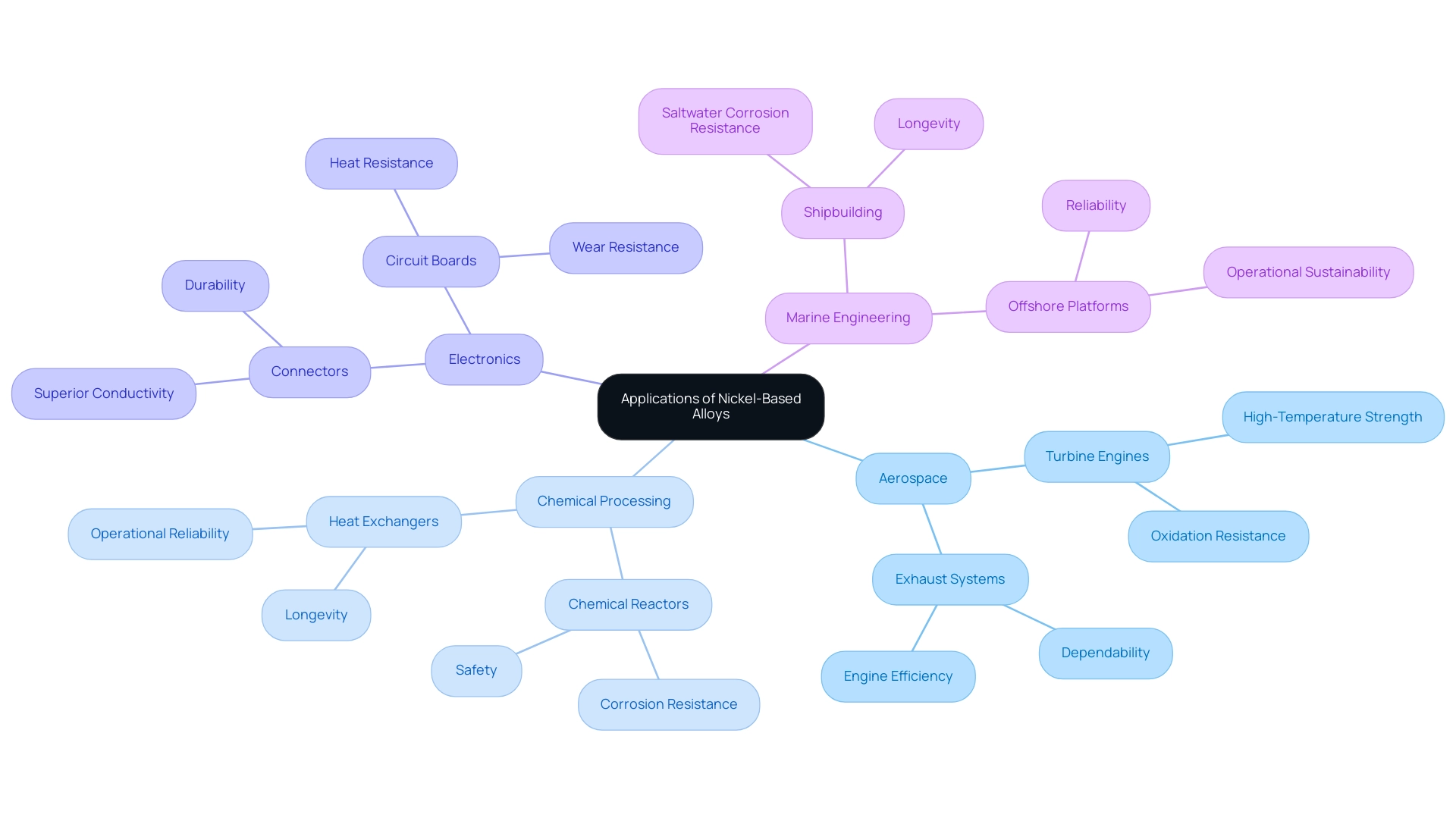
Challenges and Innovations in Nickel-Based Alloy Processing
Processing nickel-containing materials involves addressing several unique challenges that affect both machining and welding processes:
Machining Difficulties: The inherent hardness of these materials often leads to significant tool wear and material loss during machining operations. Recent advancements have focused on developing innovative cutting tools, such as those featuring a negative rake angle combined with optimized feed rates. For instance, a tool with a negative rake angle and a feed rate of 7 m/min demonstrated a 20% improvement in surface parameters compared to conventional machining parameters. Additionally, a case study by Ezhilarasan et al. utilized the Lagrangian finite element method to predict stress, strain, temperature, and tangential cutting force during the turning of Nimonic C263, reporting maximum temperatures and stresses at specific cutting conditions, which aids in understanding the machining process. Innovations in hybrid cooling techniques are also being explored to enhance tool lifespan and efficiency, although further research is needed in this area, along with modeling, optimization, and wear mechanisms in milling and drilling of Nimonic materials.
Welding Challenges: Nickel base alloys are prone to distortion and cracking, particularly during welding processes. This necessitates the use of specialized techniques to ensure structural integrity. Recent advances in laser welding and additive manufacturing have introduced novel approaches that effectively mitigate these issues. Expert insights emphasize that adopting these innovative welding techniques can significantly reduce the incidence of defects. Kumar et al. noted,
An error within 5% was observed during the prediction of surface roughness and cutting force using the developed model, which underscores how precise modeling contributes to overcoming welding challenges and maintaining quality.Supply Chain Constraints: The global fluctuations in nickel prices can create significant supply chain constraints, impacting the availability of nickel base alloys. To navigate these challenges, procurement managers must focus on strategic sourcing practices and foster strong supplier relationships. This proactive approach can help mitigate risks associated with price volatility and ensure a steady supply of materials necessary for production. In summary, understanding these processing challenges and leveraging innovative solutions is essential for optimization in the use of nickel base alloys.
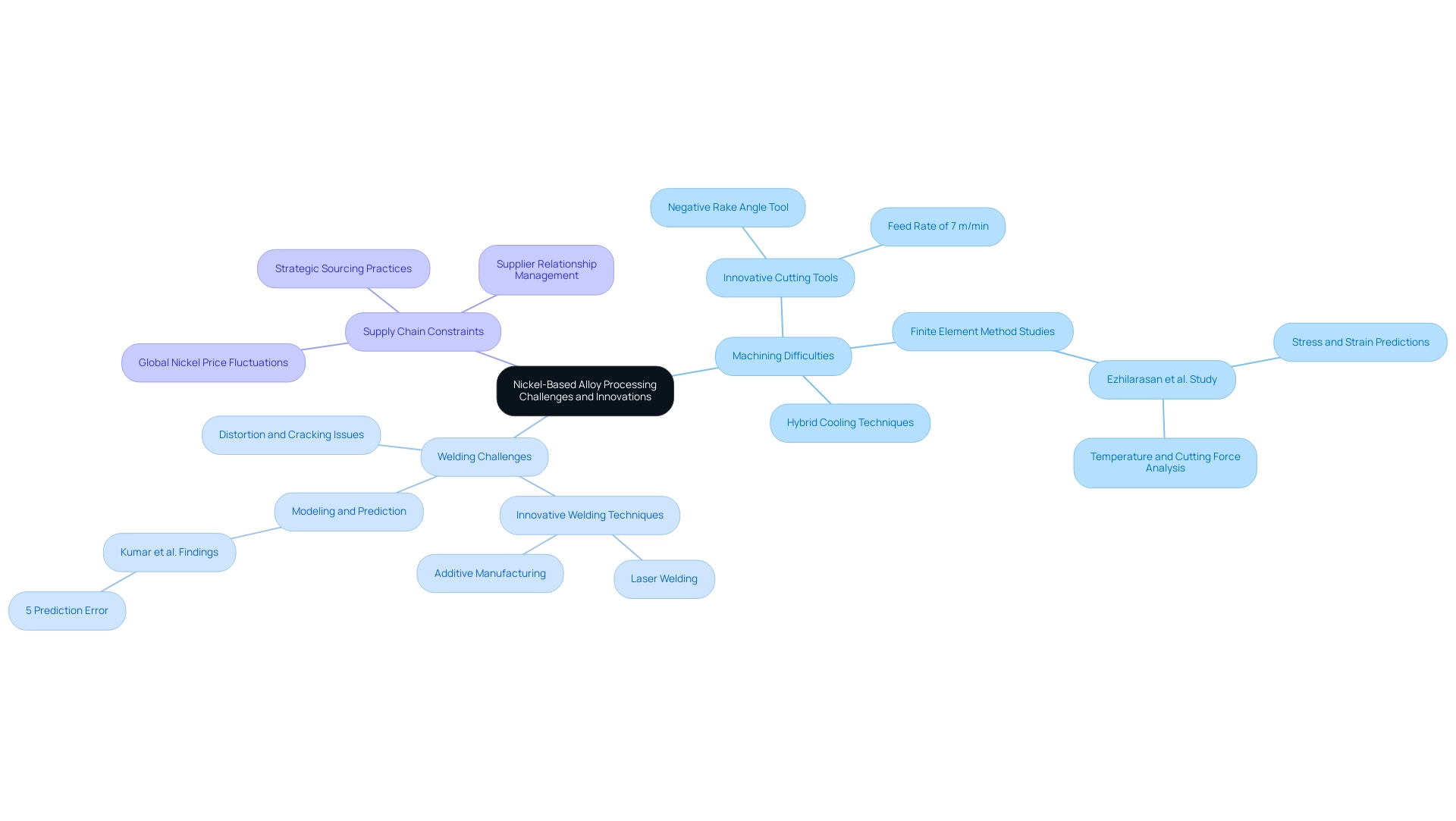
Conclusion
Nickel-based alloys represent a cornerstone of advanced materials, distinguished by their unique composition and outstanding performance under extreme conditions. Their exceptional mechanical properties, including high strength, corrosion resistance, and thermal stability, make them indispensable in critical sectors such as aerospace, chemical processing, and electronics. As industries increasingly prioritize safety and efficiency, the demand for these alloys is projected to rise, underscoring their vital role in modern manufacturing and engineering applications.
Navigating the challenges associated with the processing of nickel-based alloys is essential for procurement managers aiming to enhance operational efficiency. Innovations in machining and welding techniques are paving the way for improved performance and reduced costs, ensuring that these materials can be utilized effectively in complex applications. By staying informed about market trends and technological advancements, procurement professionals can make strategic decisions that align with their operational goals.
In conclusion, the significance of nickel-based alloys cannot be overstated. Their versatility and reliability in demanding environments position them as key materials for the future. As industries continue to evolve, understanding the intricacies of these alloys will empower procurement managers to optimize their material selections, ultimately contributing to enhanced safety, performance, and competitiveness in their respective fields.




